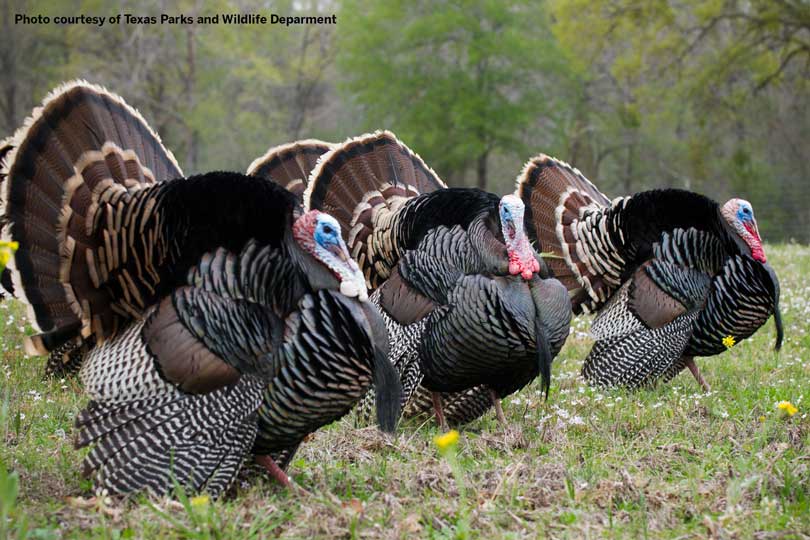By Gary Joiner
TFB Radio Network Manager
The recent spring turkey season in Texas offered a “mixed bag” for hunters, with lower bird numbers being matched by improved habitat and better conditions, according to the state’s wild turkey program leader.
Lower production and recruitment over the last two years meant fewer birds on the range, although some mature toms from the 2015/16 were available to hunters.
“Our numbers were down. But we had a really good wet winter, had plenty of moisture this spring, so conditions were in good shape. The hens were in great shape,” Jason Hardin, Texas Parks and Wildlife Department (TPWD) Wild Turkey Program leader, told the Texas Farm Bureau Radio Network. “A lot of those hens were kind of walking away with gobblers that hunters wanted to call in, so there was a little bit of frustration early in the season. But those hunters that stuck with it ended up having some pretty good hunts, myself included.”
Hunters had to contend with difficult weather and other factors during stretches of the spring season.
“I was in South Texas opening week of the season, and toms were with hens. They did not pay attention to hunters very well at all until later in the day when you could get a couple of birds to come to you. But by the end of the season, that last weekend season, the birds would run in. So, it tends to get better as the season goes on, in my opinion,” Hardin said.
Hardin and other TPWD biologists will use harvest data and other information to help prepare for next season.
“We’re always working to try to figure out what happened and what we need to do to make things improve, accepting the fact that a lot of it’s out of our control as far as weather goes. But, we’re trying to compile the harvest data, look at where we’re at and see if that gives us any direction,” he said. “In the meantime, we’re working with our partners trying to get habitat work on the ground. We’re doing habitat evaluations in East Texas to identify where we have good opportunity to put birds on the ground for additional restoration effort.”
Hunters are starting to accept the TPWD My Texas Hunt Harvest mobile app as a tool to report their harvested bird, he said.
“I am pleased. I think the app has been very convenient for a lot of hunters. It may have been something new for some folks, but it’s worked well. People are adjusting to it, and it provides a great opportunity for individuals to just pull the phone out of their pocket, report their bird, rather than driving across a county to try to find a mandatory check station,” he said. “I just want to thank all the hunters out there for doing what they do in supporting conservation. We can’t do anything without our hunting public.”

